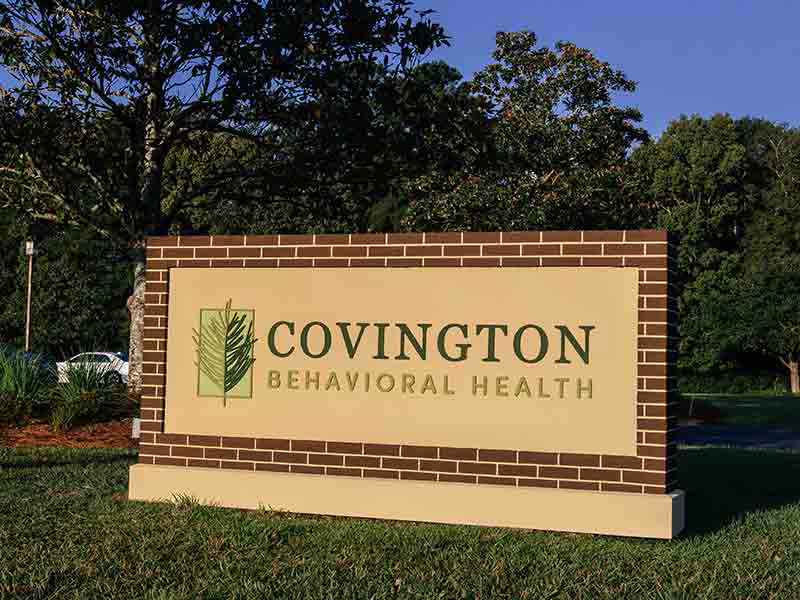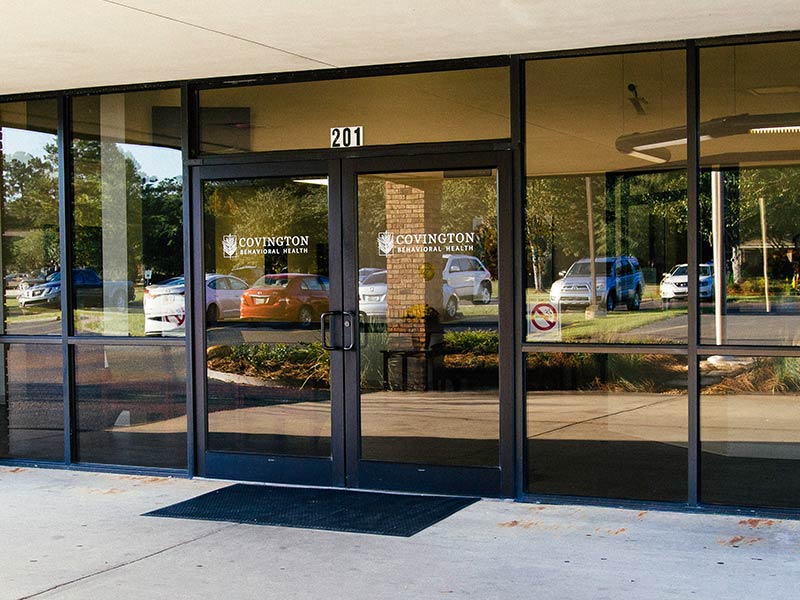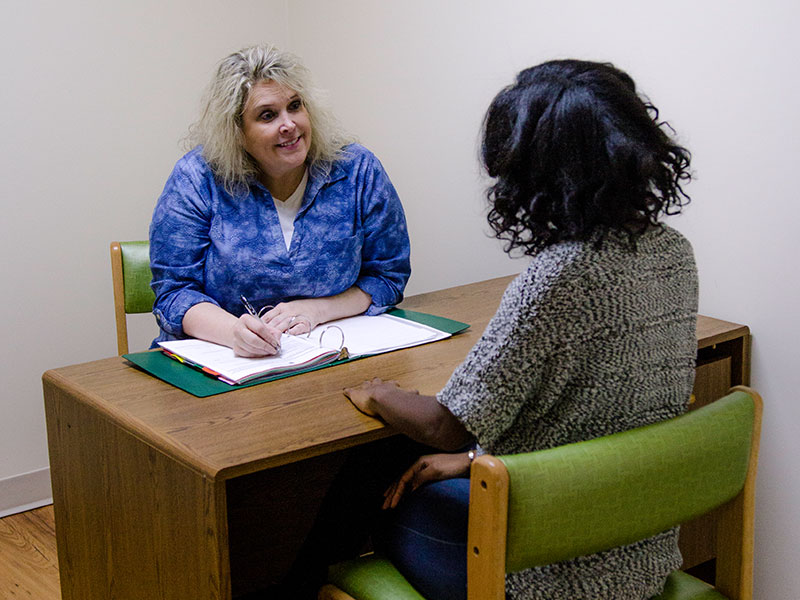At Covington Behavioral Health, we believe education is an important first step in the effort to heal from anxiety. Understanding the signs, symptoms, and effects of anxiety can help you get the right type and level of care for yourself or a loved one.
Understanding Anxiety
Learn about anxiety
Anxiety disorders are a category of mental health conditions that are associated with excessive worry, apprehension, and fear. These feelings can become so intense that they interfere with daily activities. A person with an anxiety disorder will shy away from attending to certain responsibilities or activities in an attempt to avoid causing more anxiety, but this may actually result in increased stress levels. The result can be a very uncomfortable cycle of ongoing anxiety.
Common types of anxiety disorders include:
Generalized anxiety disorder causes an individual to feel overwhelmed by everyday demands. He or she fears the worst outcome in every situation, even if it is illogical. Although that person may even admit or know logically that such fears are irrational, he or she will be unable to stop the persistent worry.
Separation anxiety disorder is marked by heightened and unreasonable anxiety over separation from close family members, partners, or friends, even for reasonable amounts of time for legitimate reasons. The individual may try to prevent separation from the loved one if possible, or go to extreme measures to maintain constant contact with that loved one. This disorder may also apply to loved objects or a home that is perceived as safe.
Social anxiety disorder, also known by the term social phobia, makes normal social situations feel like frightening scenes. Social anxiety causes the individual to worry about judgment from others. This may lead the individual to isolate him or herself, and miss out on important life events and goals.
Panic disorder leads to panic attacks, frightening episodes that feature symptoms including heart pounding, sweating, shortness of breath, lightheaded shaking, and dizziness. Panic attacks are often accompanied by chest pain and nausea as well. Many who suffer from such attacks report feeling that they were going to die during the attack. Some feel as if they are spinning out of control, or as if they are removed from their own body or surroundings, experiences that are known clinically as depersonalization and derealization. Different individuals will experience panic attacks with varying degrees of frequency and intensity, and many will also suffer from severe worry that an attack could set in at any time.
Specific phobia leads to an imagined threat of harm from a specific situation or thing. When a situation related to the phobia might be expected, the person who suffers from a specific phobia will try to stay as far away as possible. The irrational fears might include fears of animals, flying, heights, spiders, or blood.
Agoraphobia includes a fear of having no place to escape, even when there is no threat related to staying exactly where a person is. The situations that might become overwhelming with this disorder include being in long open fields, inside of public transportation, places of enclosure, or crowds.
Anxiety disorders are limiting, restrictive, and not always easy for families to deal with. Some sad results of attempts to soothe anxiety include self-medication that leads to substance dependence and addiction, or increased isolation that leads to deeper unhappiness. A compassionate and experienced treatment team can provide the care necessary to provide excellent recovery therapy for an anxiety disorder.
Statistics
Anxiety statistics
The Anxiety and Depression Association of America (ADAA) states that nearly 40 million American adults, ages 18 or older (18 percent of the adult population), suffer from some sort of anxiety disorder. The American Psychiatric Association (APA) reports that the 12-month prevalence for specific phobia is 7 to 9 percent of the adult population. The APA also reports the following 12-month prevalence rates for other types of anxiety disorders: social anxiety disorder (7 percent), panic disorder (2 to 3 percent), and generalized anxiety disorder (2.9 percent).
Causes and Risk Factors
Causes and risk factors for anxiety
The following are potential risk factors for developing anxiety disorders:
Genetic: Anxiety disorders have genetic links, meaning that it is possible to inherit anxiety from parents in more than a learned fashion. For example, heritable characteristics such as behavioral inhibition, negative affectivity, and anxiety sensitivity, may all increase a person’s risk for developing an anxiety disorder.
Environmental: In some cases, anxiety disorder risk is heightened by environmental experiences. Life stress in times of difficulty, such as job loss, death of a loved one, financial strain, or even happy stressors like the birth of a child, can encourage anxiety disorders. Trauma might bring the development of certain trauma-related phobias. Negative childhood experiences like abuse can cause the onset of anxiety disorders later in life.
Risk Factors:
- Higher sensitivity to stress
- Female gender
- Past experience of a traumatic event
- Past experience of sexual or physical abuse
- A family history of anxiety disorder
- Neurotic tendencies
- Being sheltered or overly protected in childhood
Signs and Symptoms
Signs and symptoms of anxiety
Anxiety disorders may manifest themselves in many ways. Some individuals who struggle with anxiety disorders are able to live normal lives, while others find it difficult to cope on a daily basis and may find it difficult to achieve everyday goals.
Behavioral symptoms:
- Avoiding particular situations and objects
- Inability to perform in daily actions
- Refusing to leave the house
- Being restless, or exhibiting agitated movements
- Wanting to remain isolated
- Ignoring responsibilities with frequency
- Refusing to separate from certain attachment figures
Physical symptoms:
- Dizziness
- Headaches
- Sleep disruption
- Nausea
- Vomiting
- Sweating
- Stomachaches
- Fatigue
- Muscle tension
- Pounding heart
Cognitive symptoms:
- Becoming paranoid
- Experiencing mental blankness
- Experiencing racing thoughts
- Feeling separate from reality (derealization)
- Feeling separate from one’s own body (depersonalization)
- Feeling uncontrolled worry and apprehension
- Having trouble concentrating
- Having nightmares
- Having suicidal thoughts
Psychosocial symptoms:
- Irrational feelings of hopelessness or helplessness
- Irritability
- Low self-esteem
- Mood swings
- Uncontrolled worry and apprehension
- Uncontrolled fear
Effects
Effects of anxiety
A variety of negative effects can be triggered by untreated anxiety disorder.
- Loss of ability to perform socially
- Loss of job
- Decline of general physical health
- Lessened quality of life
- Family tension
- Relationship issues
- Self-injury
- Additional mental health problems
- Substance abuse and/or addiction
Co-Occurring Disorders
Anxiety and co-occurring disorders
Anxiety often is experienced with co-occurring mental health disorders, such as:
- Eating disorders
- Personality disorders
- Impulse-control disorders
- Additional anxiety disorders
- Bipolar disorder
- Substance use disorder
- Obsessive-compulsive disorder
- Depression















